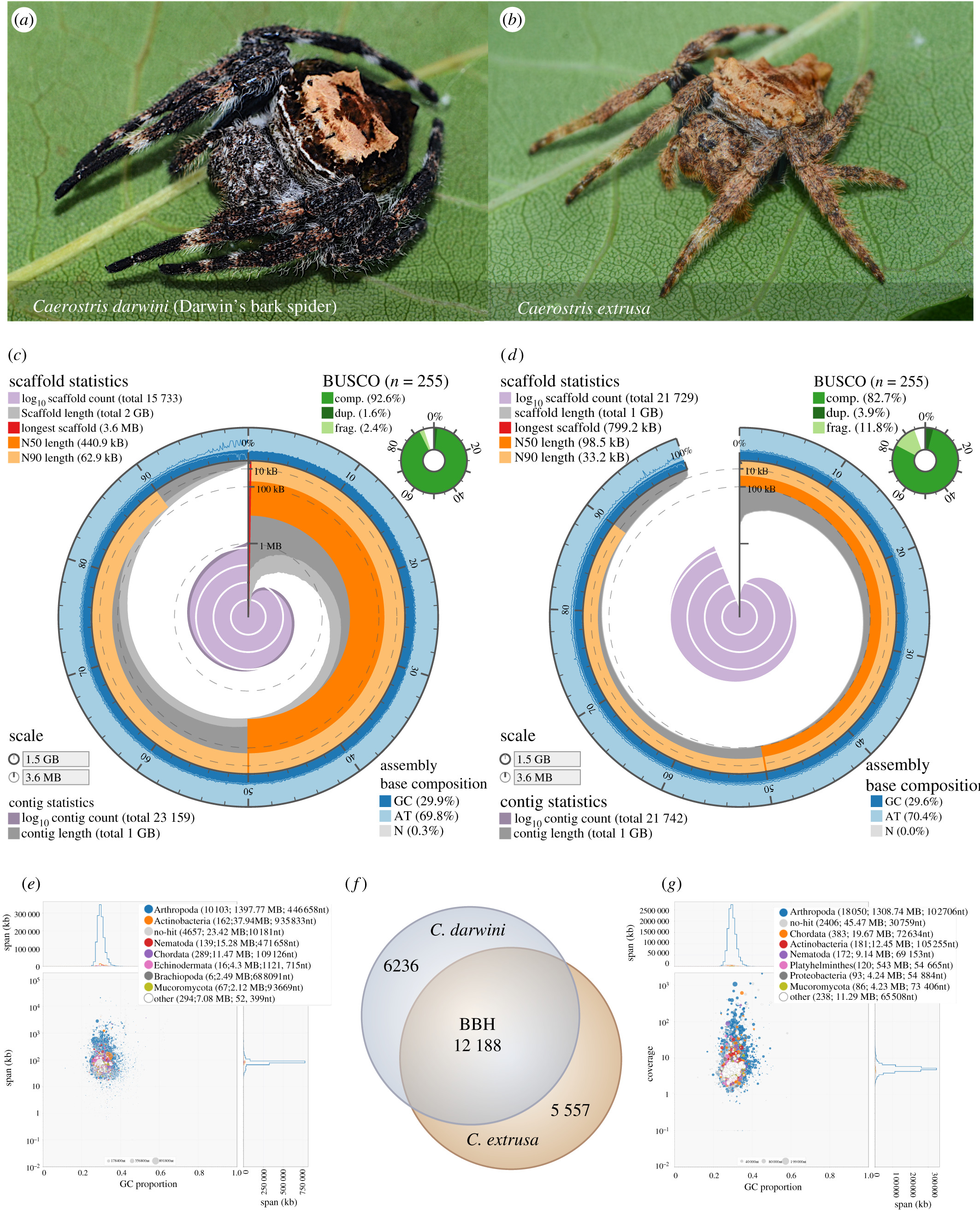DOI:10.1098/rsob.210242
- 1. Institute for Advanced Biosciences, Keio University
- 2. Systems Biology Program, Graduate School of Media and Governance, Keio University
- 3. RIKEN Center for Sustainable Resource Science
- 4. Japan Synchrotron Radiation Research Institute
- 5. RIKEN SPring-8 Center/li>
- 6. Spiber Inc.
- 7. Department of Material Chemistry, Kyoto University

From “Darwin’s bark spider shares a spidroin repertoire with Caerostris extrusa but achieves extraordinary silk toughness through gene expression” by Kono et al.. Licensed under CC-BY 4.0.
Abstract
Spider silk is a protein-based material whose toughness suggests possible novel applications. A particularly fascinating example of silk toughness is provided by Darwin’s bark spider (Caerostris darwini) found in Madagascar. This spider produces extraordinarily tough silk, with an average toughness of 350 MJ m−1 and over 50% extensibility, and can build river-bridging webs with a size of 2.8 m2. Recent studies have suggested that specific spidroins expressed in C. darwini are responsible for the mechanical properties of its silk. Therefore, a more comprehensive investigation of spidroin sequences, silk thread protein contents and phylogenetic conservation among closely related species is required. Here, we conducted genomic, transcriptomic and proteomic analyses of C. darwini and its close relative Caerostris extrusa. A variety of spidroins and low-molecular-weight proteins were found in the dragline silk of these species; all of the genes encoding these proteins were conserved in both genomes, but their genes were more expressed in C. darwini. The potential to produce very tough silk is common in the genus Caerostris, and our results may suggest the existence of plasticity allowing silk mechanical properties to be changed by optimizing related gene expression in response to the environment.